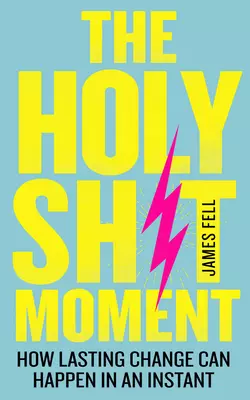The Holy Sh*t Moment: How lasting change can happen in an instant

James Fell
Тип: электронная книга
Жанр: Спорт, фитнес
Язык: на английском языке
Стоимость: 1163.25 ₽
Издательство: HarperCollins
Дата публикации: 16.04.2024
Отзывы: Пока нет Добавить отзыв
О книге: From internationally syndicated fitness columnist and author, James Fell, comes a no-nonsense guide on how to get in shape, fix your finances, alleviate depression and change your life for good.We’ve all been there. Wanting to change your life forever, but only doing it in fits and starts. Feeling inspired to be disciplined one day, then falling back into old habits on the next. Or changing for a few weeks or even months, but then slipping back into familiar behaviours. Bad habits are hard to break for a reason. But you still try because the goal is worth it: slowly and painfully forming new habits to the point where you are able to adhere to a new lifestyle, long-term.Not only do we struggle with all of it but the failure rates of these models are staggering.What if there was a different way? What if sudden moment, which happens to be a surprisingly common occurrence among those who succeed would allow you to skip the struggle of behaviour change and just become a different person in a moment? What if all the motivation they would ever need to change could arrive unbidden because of a life-altering flash of insight? It is the power of epiphany – a triggering event when drive and clarity of purpose for changing one’s life is instantly attained. James Fell’s THE HOLY SHIT MOMENT is about that who have sustained change. The stories outlined in this book examine an abrupt awakening, where a person’s purpose switches course in the space of a few seconds; their life is partitioned into the time before that moment occurred, and what comes after. In an instant, the gradual steps of behavior change are bypassed and life transformation takes hold for good. But is an epiphany something that can be generated?Yes. THE HOLY SHIT MOMENT is a self-help book written in a brash, audacious and informal, your-good-friend-giving-you-the-scoop style, but with the knowledge, research, wisdom and personal anecdotes to back up James’ words in the vein of Jen Sincero’s You Are a Badass.